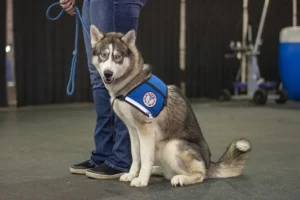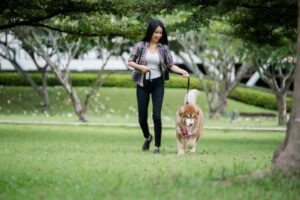Training your dog doesn’t have to be limited to just scheduled sessions or special training environments. At Sit Now Stay Dog Training, we believe that dog training should be an integrated part of your everyday life, making it natural, fun, and effective. By incorporating small training moments throughout your day, you can reinforce good behavior while deepening the bond with your furry companion.

Here are some helpful tips on how to seamlessly incorporate training into your daily routine:
1. Start with Basic Commands During Walks
Daily walks are a fantastic opportunity to work on basic obedience skills. As you walk your dog, practice commands like “sit,” “stay,” or “heel.” Use the environment around you to encourage positive behavior—when your dog encounters a distraction, use it as a chance to reinforce focus and control. This will help your dog understand that the skills they’ve learned during training apply to real-world situations.
2. Use Meal Times for Training
Mealtime is not just a chance for your dog to eat—it’s also a great time to reinforce training! Ask your dog to perform a command, like “sit” or “down,” before you place the food bowl down. You can also use mealtimes to work on patience and impulse control, teaching your dog to wait calmly before eating. This is a simple yet effective way to integrate training into something your dog already enjoys.
3. Train During Playtime
Playtime is another valuable opportunity to integrate training. Whether it’s fetch, tug-of-war, or simply playing with a favorite toy, use these moments to reinforce important behaviors. For example, teach your dog to “drop it” during a game of fetch or “leave it” during tug-of-war. Playtime can be a fun and rewarding way to reinforce what’s learned in training sessions.
4. Reinforce Good Behavior at Home
Your home is a learning environment, too! Every interaction you have with your dog is a chance to encourage desired behaviors. If your dog sits calmly at the door instead of jumping, reward them with praise or a treat. If they lay down quietly while you’re cooking dinner, acknowledge their good behavior. The more consistent you are in reinforcing good behavior in everyday situations, the faster those behaviors will become second nature for your dog.
5. Incorporate Mental Stimulation
Mental stimulation is just as important as physical exercise, and training exercises are a great way to challenge your dog’s mind. You can integrate short training sessions throughout the day, teaching new commands or working on problem-solving skills. Puzzle toys, treat-dispensing games, and new tricks are all ways to keep your dog mentally engaged.
6. Practice Consistency
One of the most important aspects of integrating training into your routine is consistency. Whether you’re working on house manners, leash walking, or basic commands, the key is to be consistent in your expectations. Use the same cues and reward system every time to help your dog understand what’s expected of them. The more consistent you are, the quicker your dog will learn and retain the skills you’re teaching.
7. Involve the Whole Family
Training your dog should be a family effort. Everyone in your household should be on the same page when it comes to commands and expectations. This ensures that your dog receives clear and consistent messages, making training more effective. If everyone practices basic commands like “sit” and “stay,” your dog will quickly learn to apply those behaviors in various contexts.
8. Keep Training Fun
Training doesn’t have to feel like a chore. Keep it fun by mixing things up and rewarding your dog with treats, praise, or play. The more enjoyable the training sessions, the more motivated your dog will be to learn. Celebrating their progress helps them stay excited and engaged in the process.
9. Seamlessly Transition to Real-Life Situations
Finally, remember that what you work on in training doesn’t end when you leave the training environment. Whether your dog is learning in private lessons, day school, or boarding school, the skills they acquire can be used at home or in public places. Incorporating what your dog learns in training into everyday life, such as practicing commands at the park, in the car, or when you have visitors, helps solidify those behaviors.
At Sit Now Stay Dog Training in Mission Hills, KS, we believe in making training a part of everyday life. Whether you’re working through our programs like private lessons, day school, boarding school, or puppy training, the techniques and skills we teach can easily be continued at home. By making training a natural part of your day-to-day routine, you’ll see lasting positive changes in your dog’s behavior—and a stronger bond with your furry friend.




